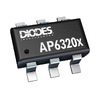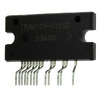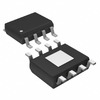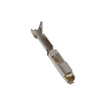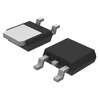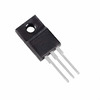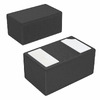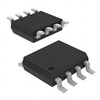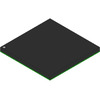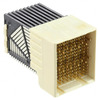STP55NF06 Power MOSFET Guide: Pinout, Specifications, and Alternatives
In this article, we dive into the capabilities and applications of the STP55NF06 MOSFET, a robust N-channel power MOSFET well-regarded for its efficiency and adaptability in high-demand circuits. Known for its low on-resistance and swift switching speed, this MOSFET is an asset in power-sensitive systems such as motor controllers and power supplies. With the ability to handle a 60V drain-source voltage and continuous currents up to 55A, the STP55NF06 is ideal for power-intensive applications, offering efficient thermal management and reliability across various operating conditions. From automotive systems to renewable energy applications, the STP55NF06 MOSFET’s versatile design enables improved performance, energy efficiency, and enhanced system longevity.Catalog
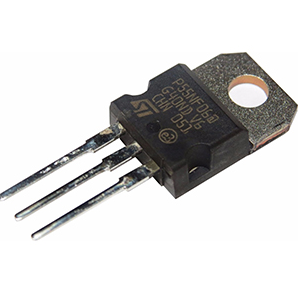
Understanding the STP55NF06
The STP55NF06 is a highly capable N-channel MOSFET, notable for handling considerable current flows and enabling swift switching actions. It demonstrates impressive efficiency due to its low on-resistance. The device begins conduction with a gate voltage of 10V and reaches maximum efficiency at 20V, positioning it as a strong candidate for operating high-power loads. Its gate threshold of 4V ensures it works well with microcontrollers, yet it achieves its best at 10V, supporting continuous current up to 27A. To integrate smoothly with microcontrollers, the involvement of a driver circuit or a logic-level MOSFET, such as the 2N7002, is advisable. The device's commendable frequency response makes it fitting for DC-DC converters.
In applications involving MOSFETs like the STP55NF06, grounding the gate correctly is required to avoid unintended triggering. Since MOSFETs activate and deactivate based on voltage, mastering voltage management becomes insistent. You can often incorporate additional protective measures like zener diodes to stabilize gate voltage and shield against voltage surges.
Successfully integrating with microcontrollers requires the strategic deployment of driver circuits. These circuits address the differences between the microcontroller’s output voltage and the MOSFET's gate demands. A common approach employs a level-shifting driver to bridge this gap, ensuring seamless interaction between components.
Pin Configuration

CAD Model
Symbol
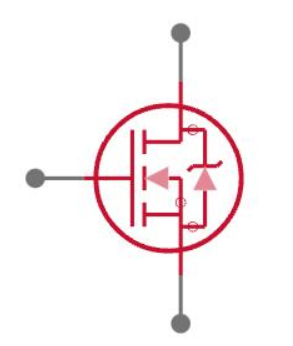
Footprint
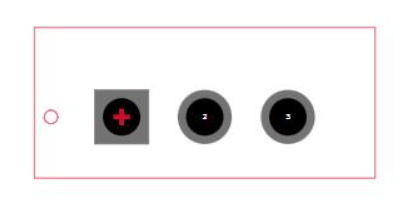
3D Model
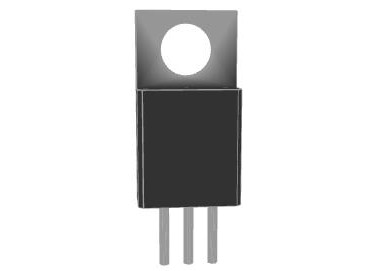
Features
|
Feature |
Specification |
|
MOSFET Type |
N-Channel |
|
Continuous Drain Current (ID) |
35A |
|
Pulsed Drain Current (ID-peak) |
50A |
|
Drain to Source Breakdown Voltage (VDS) |
60V |
|
Drain Source Resistance (RDS) |
0.018 Ω |
|
Gate Threshold Voltage (VGS-th) |
20V (max) |
|
Rise Time |
50 ns |
|
Fall Time |
15 ns |
|
Input Capacitance (Ciss) |
1300 pF |
|
Output Capacitance (Coss) |
300 pF |
|
Package Type |
TO-220 |
Applications
Electric Power Steering (EPS)
Electric Power Steering systems in modern vehicles enhance both precision and comfort in driving. The STP55NF06 MOSFET plays a remarkable role in optimizing power usage and response time, thereby contributing to these enhancements. Drivers often report a tangible reduction in fuel consumption, as EPS systems draw power selectively, significantly impacting vehicle efficiency.
Anti-lock Braking System (ABS)
Within ABS, the STP55NF06 provides swift and efficient switching, used for optimal braking control. Its high-temperature resilience and rapid switching capabilities are especially beneficial in emergencies. Tests consistently demonstrate improved safety by preventing wheel lock-up, confirming its effectiveness.
Wiper Control Systems
In wiper control systems, the STP55NF06 is basic for precise and reliable operations across various weather conditions. Its capacity to handle variable loads with minimal power loss ensures efficient windshield clearing. Extensive testing in diverse climates proves its efficacy in enhancing visibility and driver safety.
Climate Control Systems
The STP55NF06 drives motors and compressors in climate control systems with exceptional efficiency, allowing for precise temperature management within vehicles. This MOSFET's energy-saving capabilities reduce overall vehicle power consumption. Practical applications showcase its role in maintaining comfort while prolonging battery life.
Power Door Mechanisms
Power door systems leverage the consistent performance of the STP55NF06 for smooth and reliable operations. The MOSFET's durability across repeated cycles ensures longevity and minimizes maintenance. Field feedback highlights fewer failures, leading to greater consumer satisfaction and confidence in automated doors.
Test Circuit
STP55NF06 - Examining Switching Times with Resistive Load

STP55NF06 - Investigating Gate Charge Dynamics
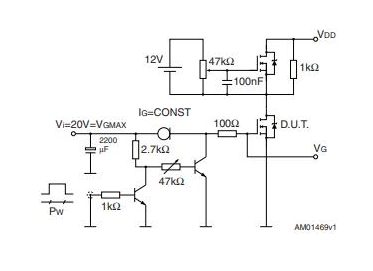
Leveraging the STP55NF06 MOSFET
The STP55NF06 MOSFET functions efficiently with modest voltage demands, initiating operation around 4V. This feature aligns well with applications requiring lower voltages. When linked to VCC, the gate prompts conduction; grounding it halts the current. If the gate voltage falls below 4V, conduction stops. A pull-down resistor, typically near 10K, ensures the gate remains grounded when inactive, bolstering reliability.
In practical applications, stable gate voltage management emerges as influential for performance. In scenarios demanding precision, integrating feedback mechanisms can refine operations, allowing systems to sustain desired functionality amidst fluctuating conditions.
Circuit Implementation
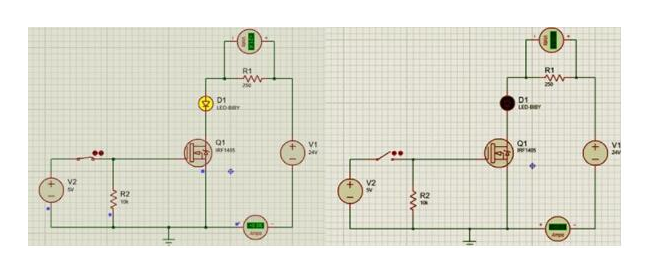
To keep the MOSFET engaged, the gate connects to the supply voltage. If the voltage slips below 4V, the device enters the ohmic region, halting conduction. A pull-down resistor, such as a 10K resistor, stabilizes the circuit by keeping the gate grounded when not active, reducing risks of unintended activation from sudden voltage changes.
Technical Specifications
|
Type |
Parameter |
|
Lifecycle Status |
ACTIVE (Last Updated: 8 months ago) |
|
Factory Lead Time |
12 Weeks |
|
Mount |
Through Hole |
|
Mounting Type |
Through Hole |
|
Package / Case |
TO-220-3 |
|
Number of Pins |
3 |
|
Weight |
4.535924g |
|
Transistor Element Material |
SILICON |
|
Current - Continuous Drain (Id) @ 25℃ |
50A Tc |
|
Drive Voltage (Max Rds On, Min Rds On) |
10V |
|
Number of Elements |
1 |
|
Power Dissipation (Max) |
110W Tc |
|
Turn Off Delay Time |
36 ns |
|
Operating Temperature |
-55°C~175°C TJ |
|
Packaging |
Tube |
|
Series |
STripFET™ II |
|
JESD-609 Code |
e3 |
|
Part Status |
Active |
|
Moisture Sensitivity Level (MSL) |
1 (Unlimited) |
|
Number of Terminations |
3 |
|
ECCN Code |
EAR99 |
|
Resistance |
18mOhm |
|
Terminal Finish |
Matte Tin (Sn) |
|
Voltage - Rated DC |
60V |
|
Current Rating |
50A |
|
Base Part Number |
STP55N |
|
Pin Count |
3 |
|
Element Configuration |
Single |
|
Operating Mode |
ENHANCEMENT MODE |
|
Power Dissipation |
30W |
|
Turn On Delay Time |
20 ns |
|
FET Type |
N-Channel |
|
Transistor Application |
SWITCHING |
|
Rds On (Max) @ Id, Vgs |
18m Ω @ 27.5A, 10V |
|
Vgs(th) (Max) @ Id |
4V @ 250μA |
|
Input Capacitance (Ciss) (Max) @ Vds |
1300pF @ 25V |
|
Gate Charge (Qg) (Max) @ Vgs |
60nC @ 10V |
|
Rise Time |
50ns |
|
Vgs (Max) |
±20V |
|
Fall Time (Typ) |
15 ns |
|
Continuous Drain Current (ID) |
50A |
|
Threshold Voltage |
3V |
|
JEDEC-95 Code |
TO-220AB |
|
Gate to Source Voltage (Vgs) |
20V |
|
Drain Current-Max (Abs) (ID) |
55A |
|
Drain to Source Breakdown Voltage |
60V |
|
Pulsed Drain Current-Max (IDM) |
200A |
|
Dual Supply Voltage |
60V |
|
Nominal Vgs |
3 V |
|
Height |
9.15mm |
|
Length |
10.4mm |
|
Width |
4.6mm |
|
REACH SVHC |
No SVHC |
|
Radiation Hardening |
No |
|
RoHS Status |
ROHS3 Compliant |
|
Lead Free |
Lead Free |
Comparable Components
|
Part Number |
Manufacturer |
Mount |
Package / Case |
Continuous Drain Current
(ID) |
Current - Continuous Drain
(Id) @ 25°C |
Threshold Voltage |
Gate to Source Voltage (Vgs) |
Power Dissipation |
Power Dissipation-Max |
|
STP55NF06 |
STMicroelectronics |
Through Hole |
TO-220-3 |
50 A |
50A (Tc) |
3 V |
20 V |
30 W |
110W (Tc) |
|
STP65NF06 |
STMicroelectronics |
Through Hole |
TO-220-3 |
60 A |
60A (Tc) |
1 V |
15 V |
110 W |
110W (Tc) |
|
STP60NF06L |
STMicroelectronics |
Through Hole |
TO-220-3 |
55 A |
55A (Tc) |
2 V |
25 V |
114 W |
114W (Tc) |
|
STP60NF06 |
STMicroelectronics |
Through Hole |
TO-220-3 |
60 A |
60A (Tc) |
4 V |
20 V |
110 W |
110W (Tc) |
|
FDP55N06 |
ON Semiconductor |
- |
TO-220-3 |
- |
60A (Tc) |
- |
- |
- |
110W (Tc) |
Package
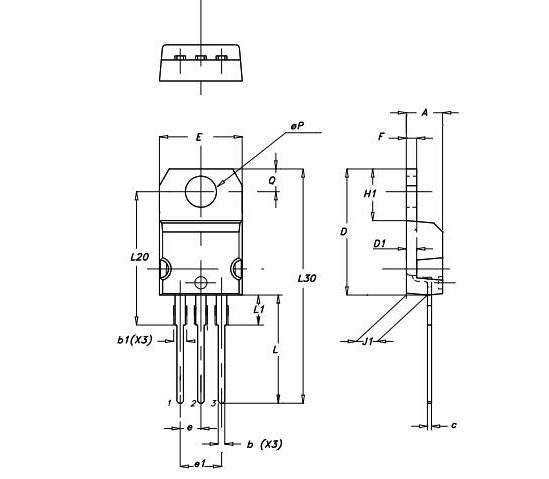
Manufacturer Overview
STMicroelectronics leads in semiconductor solutions, showcasing deep knowledge in silicon and systems. This expertise pushes them forward in advancing System-on-Chip (SoC) technology, aligning with modern tech advancements. Their silicon proficiency crafts high-performance, energy-efficient solutions required for various applications. From consumer electronics to industrial devices, these solutions drive the rapid evolution of connected technologies, meeting the thirst for smarter, sustainable innovations.
STMicroelectronics plays a notable role in SoC technology by integrating functions on a single chip, optimizing performance, and cutting costs. This meets the demand for efficient, compact, and versatile electronics. Automotive and IoT sectors mainly showcase the company's impact on transforming industries. The semiconductor sector thrives on relentless innovation and adaptation. Companies like STMicroelectronics foster seamless device interoperability through collaboration and integration, adapting to advances while ensuring reliability and performance. Their adaptive strategies and collaborative ethos offer a subtle model for industry best practices.
Datasheet PDF
STP55NF06 Datasheets:
STP65NF06 Datasheets:
STP60NF06L Datasheets:
STP60NF06 Datasheets:
FDP55N06 Datasheets:
About us
ALLELCO LIMITED
Read more
Quick inquiry
Please send an inquiry, we will respond immediately.
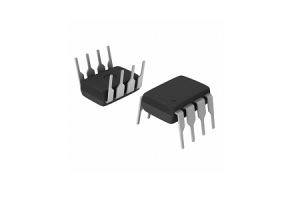
LME49720 Audio Operational Amplifier: Alternatives, Circuit, and Specifications
on October 30th

SOT23 and SOT323: What’s the Difference?
on October 30th
Popular Posts
-

What is GND in the circuit?
on January 1th 2933
-

RJ-45 Connector Guide: RJ-45 Connector Color Codes, Wiring Schemes, R-J45 Applications, RJ-45 Datasheets
on January 1th 2488
-

Fiber Connector Types: SC Vs LC And LC Vs MTP
on January 1th 2080
-

Understanding Power Supply Voltages in Electronics VCC, VDD, VEE, VSS, and GND
on November 8th 1877
-

Comparison Between DB9 and RS232
on January 1th 1759
-

What Is An LR44 Battery?
Electricity, that ubiquitous force, quietly permeates every aspect of our daily lives, from trivial gadgets to life-threatening medical equipment, it plays a silent role. However, truly grasping this energy, especially how to store and efficiently output it, is no easy task. It is against this background that this article will focus on a type of coin cell battery that may seem insignificant on the...on January 1th 1709
-

Understanding the Fundamentals:Inductance Resistance, andCapacitance
In the intricate dance of electrical engineering, a trio of fundamental elements takes center stage: inductance, resistance, and capacitance. Each bears unique traits that dictate the dynamic rhythms of electronic circuits. Here, we embark on a journey to decipher the complexities of these components, to uncover their distinct roles and practical uses within the vast electrical orchestra. Inductan...on January 1th 1650
-

CR2430 Battery Comprehensive Guide: Specifications, Applications and Comparison to CR2032 Batteries
What is CR2430 battery ?Benefits of CR2430 BatteriesNormCR2430 Battery ApplicationsCR2430 EquivalentCR2430 VS CR2032Battery CR2430 SizeWhat to look for when buying the CR2430 and equivalentsData Sheet PDFFrequently Asked Questions Batteries are the heart of small electronic devices. Among the many types available, coin cells play a crucial role, commonly found in calculators, remote controls, and ...on January 1th 1537
-

What Is RF and Why Do We Use It?
Radio Frequency (RF) technology is a key part of modern wireless communication, enabling data transmission over long distances without physical connections. This article delves into the basics of RF, explaining how electromagnetic radiation (EMR) makes RF communication possible. We will explore the principles of EMR, the creation and control of RF signals, and their wide-ranging uses. The article ...on January 1th 1533
-

CR2450 vs CR2032: Can The Battery Be Used Instead?
Lithium manganese batteries do have some similarities with other lithium batteries. High energy density and long service life are the characteristics they have in common. This kind of battery has won the trust and favor of many consumers because of its unique safety. Expensive tech gadgets? Small appliances in our homes? Look around and you'll see them everywhere. Among these many lithium-manganes...on January 1th 1502










